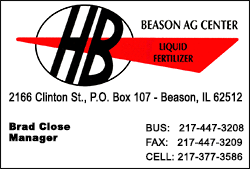 Planting PlantingLet's start with the garden. Any time now,
when soil conditions permit, it is time to plant things such as
asparagus crowns, leaf lettuce, onions, peas, potatoes,
radishes, rhubarb plants, spinach and turnips. Give it another
week or two and it is time to plant such things as broccoli,
cabbage and cauliflower.
Fertilizing
As with most things, a little bit of planning goes a long way
in preventing problems later on. Questions abound regarding
fertilizing the garden. The rule-of-thumb rate for fertilizing
flower or vegetable gardens is about 15 pounds of 10-10-10 for
an area of 1,000 square feet. This is without soil test
information. If you are using 12-12-12 or 13-13-13 fertilizer,
use about 12 pounds per 1,000 square feet. Soil pH may need to
be adjusted due to the addition of lime and sulfur, which are
acidifying. Generally, about 4.25 pounds of lime neutralizes the
acidity from 1 pound of nitrogen or sulfur. Beware of pH
requirements for different plants before you go out to apply
lime. Surrounding plants are also affected. Examples would be
blueberries, rhododendron, azalea, pin oaks and many evergreens.

Pruning
Next, let's go over some of the recommended times for pruning
different plants. The time of year we prune various trees and
shrubs is important. Most trees and shrubs that aren't of a
flowering nature should normally be pruned between December and
mid-March. With the late season, you can still do some of this
pruning now. Flowering trees and shrubs should be done after
they flower. Evergreens are best pruned in late June. With oak
wilt in the area, oaks should be pruned in December to lessen
sap flow, which attracts virus-carrying beetles. And, branches
in the way of traffic or mowing should be pruned at any time —
except oaks.
What do you do with plants not cut back last fall? Cut back
butterfly bushes to live material, with a 10-inch maximum
height. Cut back mums, but leave 2 inches of dead material,
since much stored food is located there. Cut back ornamental
grasses to a height of 4 inches or so. Some of these ornamentals
have some growth beginning, so don't wait too long. Roses are
also ready to be cut back to live material, or shaped in the
case of the Knock Outs.
Spraying for pests
We're in the pattern of up-and-down temperatures as well.
That means insect swarms when we hit the high temperature
periods. As we get warm spells, we will have the usual "nuisance
pests" appear. These include millipedes, Asian ladybugs, ant
swarms, boxelder bugs and elm leaf beetles, to name a few. They
are called nuisance pests because that is what they are. Very
few will do any damage; they are just a nuisance when you find
them in the house. The best controls are foundation sprays using
a chemical such as permethrin or bifenthrin, spot sprays of the
same chemical to control grouped insects, bait stations, and
sticky traps. A combination of methods will actually give the
best results.
[to top of second column] |

Dividing perennials
Dividing perennials is also at hand for many species. If division
is indicated, spring is the preferred time to divide. Some fleshy,
rooted perennials such as poppy, peony and iris are best divided in
the late summer to very early fall. Division is usually started when
growth resumes in the spring.
The process starts by digging around the plant and then lifting
the entire clump out of the ground. Then, using a spade or sharp
knife, start to cut the clump up so that each portion is the size of
a quart- or gallon-sized perennial. The divisions should be kept
moist and shaded while you prepare the new planting site. After
replanting, water well and protect the divisions from drying out.
Spraying for nuisance fruit
With ethephon applications for nuisance fruit removal — such as
on sweet gum trees or crabapples — the key is in the timing. The
application must be made during flowering but before the fruit set
in. For most flowering trees, there is a 10- to 14-day window of
opportunity. Sweet gums are a little tricky since there are no showy
flowers involved, so effective sprays should occur just as new
leaves begin to emerge. Sprays should leave leaves wet, but not to
the point of dripping. Good coverage of the tree is needed, so keep
in mind the size of the tree when you are weighing this option.
___
That should be enough of a list to keep a person busy for a week
or two. Before we know it, spring will arrive. That will mean
getting even busier with routine things such as lawn mowing. After
the winter we have had, most are looking forward to it.
[By
JOHN FULTON,
University of Illinois
Extension director for Logan, Menard and Sangamon counties]

 |